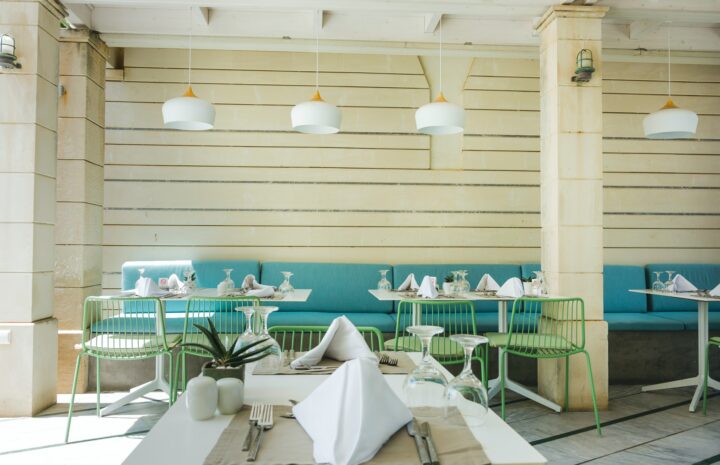The restaurant business has been developing dynamically over the years.
Visiting restaurants has become a common way to spend free time.
People love hanging out with friends and tasting new food there, and location does matter. Yes, the quality of food must be on point, but you should not forget about interior design. Not only does it attract attention, but also makes clients visit your restaurant again and again.
You may not believe in it, but the way you decorate your place may help you succeed — become popular in your district, region, and even country, and therefore sell more.
The statistics show that customers always pay attention to interior design. When it comes to choosing a perfect place for an evening with friends or beloved ones, the role of the design cannot be overemphasized.
Map Out Layout Plan
Before you change anything in physical space, it is necessary to develop a layout plan. Let’s imagine you are an Italian restaurant owner. A traditional design will probably include such colours as red, white, and green. Besides, clients will likely witness chequered tablecloths and rustic walls. The Japanese concept may be based on wabi-sabi design emphasizing minimalism and simplicity.
You can combine various design concepts: classic, family-style, minimalism-based, history-themed, farm-themed, etc.
Create Eye-Catching Entrance
The best way to attract potential clients to your restaurant is to make a stunning entrance design. It has to be unique. You don’t have to reinvent the wheel as there are a lot of ideas available on the Internet and in real life.
For instance, if you serve seafood, it would be great to use blue tones and the graffiti of octopuses, seahorses, or other sea creatures. Let your imagination wander freely, and you will come up with a fresh idea.
If it does not work, hire a designer. It will help you delegate a part of the work and focus on other things.
Focus On Colours
Colours have a high impact on the mood: they can raise spirits or depress you. The best advice we can give you is “Avoid tacky colours”. Be more mindful, use colour psychology — the study of how particular colours influence human behavior. We don’t mean you have to aim at making people order more but create a relaxing and friendly atmosphere no matter what interior design you have.
Statistics show that the best colours for restaurant walls are shades of red, brown, green, orange, yellow, blue, and purple.
If you are an owner of a small cafe or restaurant, it would be great to use white colours to make the space bigger.
Pay Attention To Tableware
Tableware is a significant part of every restaurant. Plates, forks, spoons, glasses, and napkins may either make a good impression on visitors or disappoint once and for all. Believe it or not, it is pretty easy to distinguish expensive tableware from cheap one.
You should maintain your business reputation no matter what, and high-quality tableware will help you do this. It may seem that tableware is not so important, but it is not like that at all.
Even if you serve the best food in the world, cheap tableware may ruin everything.
Don’t Forget About Bathroom
A bathroom is the face of every restaurant. On the one hand, it sounds ridiculous, but on the other, it is just a matter of fact. Don’t underestimate this room, as it may be an extension of your brand where you can use your original logo and colour schemes. A customer should understand you have made everything to create a pleasant atmosphere by caring about every detail.
It is crucial to keep high cleanliness: do wet cleaning once an hour and stock the room with supplies. A dirty bathroom may ruin your business as it will make customers wonder about the cleanliness of other areas they can’t see.
Last, But Not Least…
A particular emphasis should be placed on a menu. Don’t think of it as a list of dishes and drinks only. The menu is one of the work tools: it does not only show prices but also highlights your culinary and brand philosophy.
The menu has to be arranged well: create logical order (from appetizers to desserts) to help visitors find a particular item. Plus, you may highlight the most popular dishes on the menu. It is an effective way to promote specific items.
